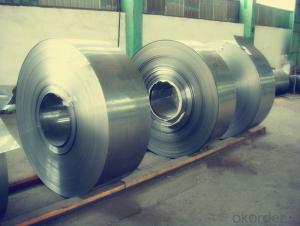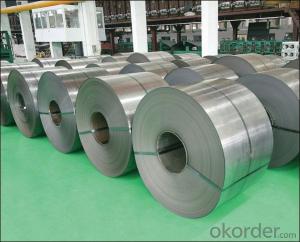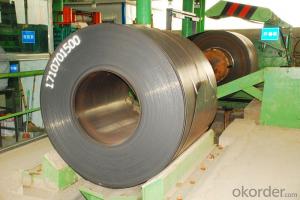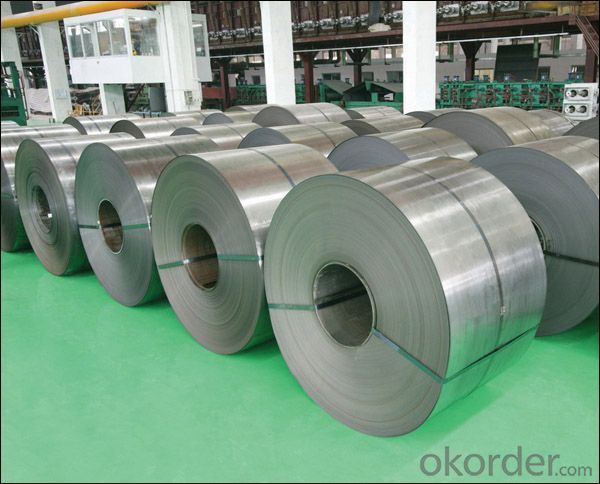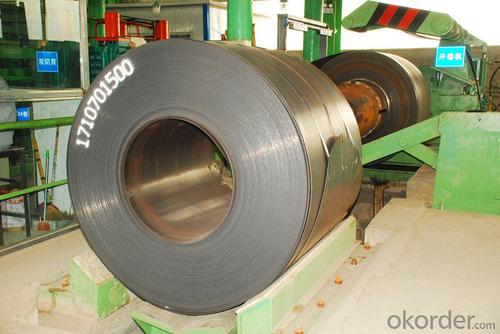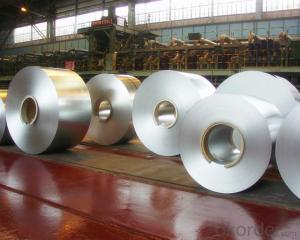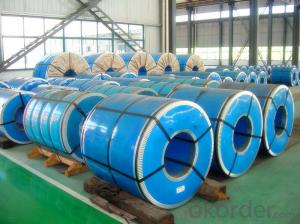Stainless Steel Coil 201 Hot / Cold Rolled Narrow Coil
- Loading Port:
- Lianyungang
- Payment Terms:
- TT OR LC
- Min Order Qty:
- 400 m.t.
- Supply Capability:
- 5000 m.t./month
OKorder Service Pledge
OKorder Financial Service
You Might Also Like
Hot Rolled Stainless Steel Coil 201 Narrow Strip No.1 Finish
Packaging Detail: For customer's requirement
Delivery Detail: 10-30days
201 Hot Rolled Stainless Steel Coil Specifications
THK:2.3/2.5/3.0/4.0mm
Width:485/510/550/610/1010/1240mm
Face:No.1
201 Hot rolled stainless steel Coil Application
Stainless steel is a production which not easy rust,acid resistance and corrosion resistance,so it is widely
used in light industry,heavy industry,daily necessities and the decoration industry.
201 Hot Stainless Steel Coil Chemical Composition(WT%)
(C):≤0.15, (Si):≤0.75, (Mn):5.5~7.50, (Cr):16.0~18.0, (N):≤0.25, (Ni):3.50~5.50, (P):≤0.060, (S):≤0.030
201 Hot Rolled Stainless Steel Coil
Strength Of Extension:100,000 To 180,000 Psi;
Yield Strength:50,000 To 150,000 Psi
Elongation :55 To 60%;
Modulus Of Elasticity:29,000,000 Psi;
Density : 280lbs/Cubic Inch(7.93g/Cm3)
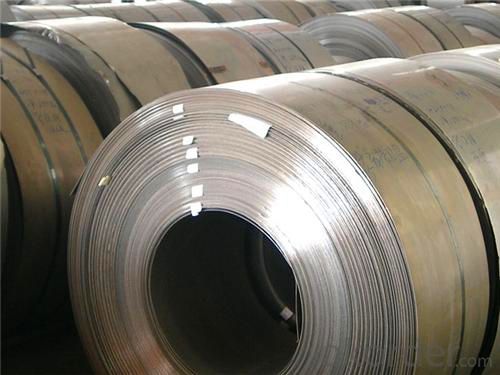
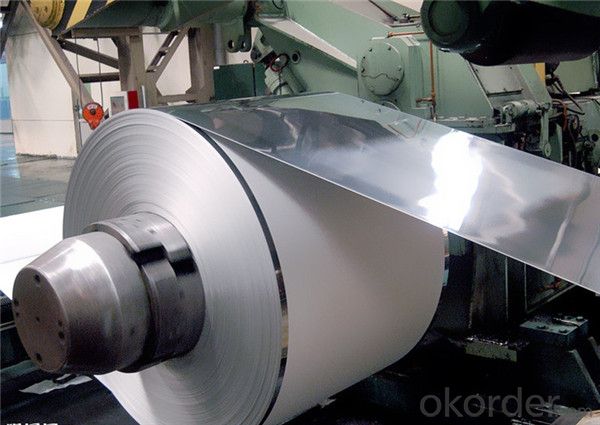
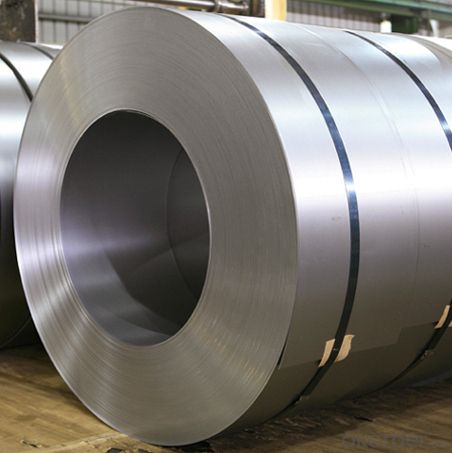
- Q: What is the corrosion resistance of stainless steel strips in different environments?
- Stainless steel strips have excellent corrosion resistance in a wide range of environments. This is due to the presence of a protective layer called chromium oxide on the surface of the steel. The chromium oxide layer forms naturally when the steel is exposed to oxygen, creating a passive barrier that prevents further corrosion. In general, stainless steel strips exhibit high resistance to corrosion in atmospheric conditions, making them suitable for outdoor applications. They can withstand exposure to moisture, rain, and even saltwater without significant degradation. This makes stainless steel an ideal choice for marine environments or coastal areas where corrosion is a common concern. Stainless steel strips also have exceptional resistance to many chemicals and acids. They can withstand exposure to various organic and inorganic compounds, making them suitable for use in chemical processing plants, pharmaceutical industries, and other corrosive environments. However, it is important to note that certain concentrations or combinations of chemicals can still cause corrosion in stainless steel, so it is essential to select the appropriate grade of stainless steel for specific applications. The corrosion resistance of stainless steel strips can vary depending on the specific alloy and surface finish. For instance, austenitic stainless steels, such as grades 304 and 316, offer excellent resistance to corrosion in most environments, including acidic and alkaline conditions. Ferritic and martensitic stainless steels, on the other hand, may have lower corrosion resistance but can still perform well in many non-corrosive or mildly corrosive environments. In summary, stainless steel strips possess remarkable corrosion resistance in a wide range of environments. Their ability to resist corrosion makes them highly versatile and suitable for various applications, including construction, automotive, food processing, and many others. However, it is important to consider the specific conditions and requirements of the environment when selecting the appropriate grade and finish of stainless steel for optimal corrosion resistance.
- Q: Can stainless steel strips be used in railway applications?
- Yes, stainless steel strips can be used in railway applications. Stainless steel is known for its corrosion resistance and durability, making it a suitable material for railway components that are exposed to harsh weather conditions and heavy loads. Stainless steel strips can be used in various railway applications such as track fastening systems, rail joints, signaling equipment, and electrical connections. The use of stainless steel strips in railway applications helps to ensure the longevity and reliability of the railway infrastructure.
- Q: Are stainless steel strips suitable for high-pressure applications?
- Indeed, high-pressure applications are well-suited for the use of stainless steel strips. Renowned for its robustness, longevity, and ability to withstand corrosion, stainless steel emerges as the optimal material to thrive in high-pressure environments. Its remarkable resistance to degradation or contamination, along with its high melting point to endure extreme temperatures, further solidify its suitability for such conditions. In industries like oil and gas, chemical processing, and power generation, where the preservation of pressure integrity remains paramount, the utilization of stainless steel strips is prevalent. Moreover, the malleability of stainless steel allows for the creation of diverse shapes and sizes, thus enabling the design and implementation of adaptable high-pressure systems.
- Q: What are the common tests performed on stainless steel strips?
- There are several common tests performed on stainless steel strips to ensure their quality and suitability for various applications. Some of these tests include: 1. Chemical Composition Analysis: This test determines the elemental composition of the stainless steel strip, including the percentage of various alloying elements such as chromium, nickel, and molybdenum. It helps verify if the material meets the required specifications and standards. 2. Mechanical Properties Testing: This involves evaluating the mechanical characteristics of the stainless steel strip, including its tensile strength, yield strength, elongation, and hardness. These properties are crucial in determining the material's strength and durability. 3. Corrosion Resistance Testing: Stainless steel is known for its excellent corrosion resistance. Tests such as salt spray testing, pitting corrosion testing, and intergranular corrosion testing assess the strip's resistance against various corrosive environments. These tests ensure that the stainless steel strip will perform well in its intended application. 4. Surface Finish Analysis: This test examines the surface quality of the stainless steel strip, including the presence of any defects, scratches, or blemishes. It ensures that the surface finish meets the required standards and provides the desired aesthetic appearance. 5. Dimensional Inspection: This test verifies the dimensional accuracy and tolerances of the stainless steel strip. It ensures that the strip's width, thickness, and length meet the specified requirements. 6. Microstructure Examination: This test involves analyzing the microstructure of the stainless steel strip using techniques like metallography and microscopy. It helps identify any potential defects or abnormalities that may affect the material's performance. These tests are essential in ensuring the quality, reliability, and performance of stainless steel strips in various industries, including automotive, construction, and manufacturing. By conducting these tests, manufacturers can deliver stainless steel strips that meet the highest standards and customer expectations.
- Q: How do stainless steel strips handle exposure to saltwater?
- Stainless steel strips are highly resistant to saltwater exposure due to their exceptional corrosion resistance properties. The chromium content in stainless steel forms a protective layer called chromium oxide, which prevents the metal from reacting with saltwater and inhibits the formation of rust or corrosion. This makes stainless steel strips ideal for applications in marine environments where they are exposed to saltwater. Additionally, stainless steel alloys can be further enhanced with the addition of other elements such as molybdenum, which increases their resistance to pitting and crevice corrosion caused by chloride ions present in saltwater. These alloys, such as 316 stainless steel, are commonly used in marine applications as they provide even greater protection against the corrosive effects of saltwater. Moreover, stainless steel strips are known for their durability and strength, allowing them to withstand the harsh conditions of saltwater exposure. They are able to maintain their integrity over extended periods, making them a reliable choice for various marine applications including boat fittings, marine hardware, and offshore structures. Overall, stainless steel strips are highly capable of handling exposure to saltwater. Their exceptional corrosion resistance properties, combined with their durability and strength, make them a preferred material in marine environments where protection against saltwater corrosion is crucial.
- Q: Can stainless steel strips be used in medical implant manufacturing?
- Yes, stainless steel strips can be used in medical implant manufacturing. Stainless steel is a commonly used material in the medical field due to its excellent corrosion resistance, high strength, and biocompatibility. It is often used for implants such as orthopedic devices, cardiovascular stents, and dental implants.
- Q: Can stainless steel strips be used in food processing applications?
- Yes, stainless steel strips can be used in food processing applications. Stainless steel is highly resistant to corrosion, easy to clean, and does not react with food, making it a suitable material for various food processing equipment such as conveyors, mixers, and slicing machines.
- Q: Can stainless steel strips be used in pulp and paper industries?
- The pulp and paper industries find stainless steel strips quite useful. Thanks to its remarkable corrosion resistance, stainless steel is an ideal material for industries that frequently encounter moisture or chemicals, like the pulp and paper industry. Multiple purposes can be served by stainless steel strips in this sector, including the production of paper machines and equipment, pulp screens, refining and washing systems, bleaching equipment, and paper handling systems. The durability and resistance to rust and corrosion of stainless steel allow the strips to endure the rigorous conditions and chemicals associated with pulp and paper processes, resulting in extended equipment lifespan and reduced maintenance expenses. Moreover, stainless steel is easy to clean and maintain, an essential aspect in preserving hygienic conditions necessary in the pulp and paper industry. Consequently, the excellent properties and suitability of stainless steel strips make them widely utilized in the pulp and paper industry.
- Q: Can stainless steel strips be used in the medical device manufacturing industry?
- Indeed, the medical device manufacturing industry can utilize stainless steel strips. Stainless steel, known for its exceptional qualities, is highly favored in the medical sector owing to its distinctive properties that render it appropriate for a wide range of applications. Its resistance to corrosion, durability, and ease of cleaning are vital for guaranteeing the safety and hygiene of medical devices. Consequently, stainless steel strips find their application in the manufacture of surgical instruments, orthopedic implants, dental tools, and other medical equipment. Moreover, the convenience of shaping, welding, and sterilizing stainless steel strips makes them an ideal choice for the medical device manufacturing industry.
- Q: How do you select the right grade of stainless steel strip for a specific application?
- To make an informed decision on selecting the appropriate grade of stainless steel strip for a specific application, careful consideration of various factors is necessary. The following steps outline the process: 1. Determine the specific demands of the application: It is crucial to understand the specific requirements that the stainless steel strip will need to withstand. Factors such as temperature, corrosion resistance, strength, magnetism, and aesthetics should be taken into account. 2. Assess the corrosive environment: Evaluate the potential exposure of the stainless steel strip to corrosive agents, such as chemicals, moisture, or saltwater. This assessment will help narrow down the grades that offer the necessary corrosion resistance. 3. Evaluate the mechanical properties: Consider the required strength, hardness, and toughness of the stainless steel strip. Different grades exhibit varying mechanical properties, so it is essential to select a grade that can withstand the intended load and stress. 4. Consider the fabrication process: Take into account the manufacturing method that will be used to shape the stainless steel strip. Certain grades may be more suitable for processes such as welding, forming, or machining. 5. Review industry standards: Check if there are any specific industry standards or specifications that need to be met for the application. This may include regulations related to food contact, medical devices, or construction. 6. Seek advice from experts or suppliers: Consult with stainless steel experts or suppliers who possess knowledge and experience in the field. They can provide valuable insights and recommend the most appropriate grade for the specific application. 7. Evaluate cost implications: Consider the cost implications of different stainless steel grades. Some grades may be more expensive due to their specific properties or availability. It is important to strike a balance between desired performance and available budget. By following these steps and considering the unique requirements of the application, one can effectively select the appropriate grade of stainless steel strip that will deliver optimal performance and durability.
Send your message to us
Stainless Steel Coil 201 Hot / Cold Rolled Narrow Coil
- Loading Port:
- Lianyungang
- Payment Terms:
- TT OR LC
- Min Order Qty:
- 400 m.t.
- Supply Capability:
- 5000 m.t./month
OKorder Service Pledge
OKorder Financial Service
Similar products
Hot products
Hot Searches
Related keywords
